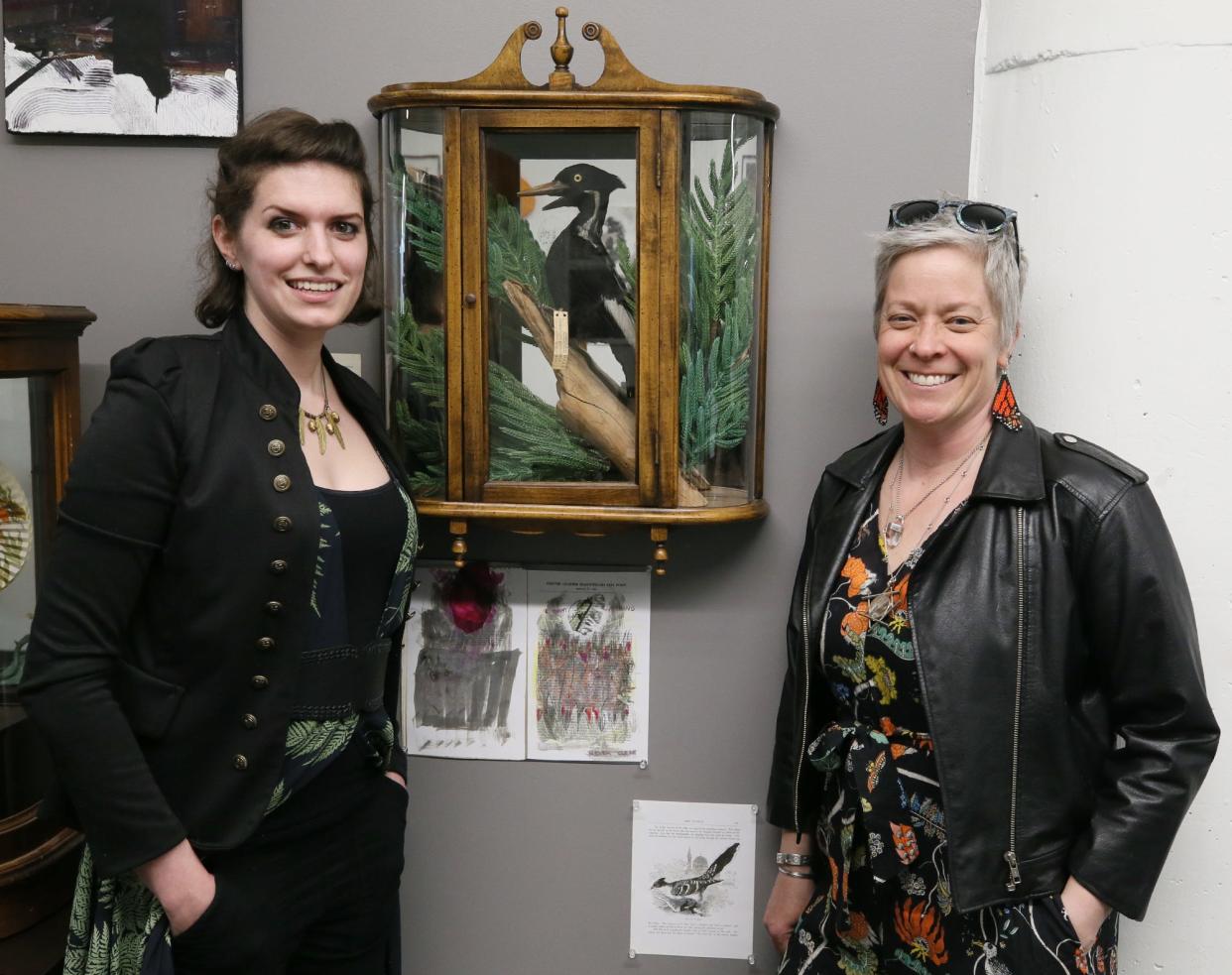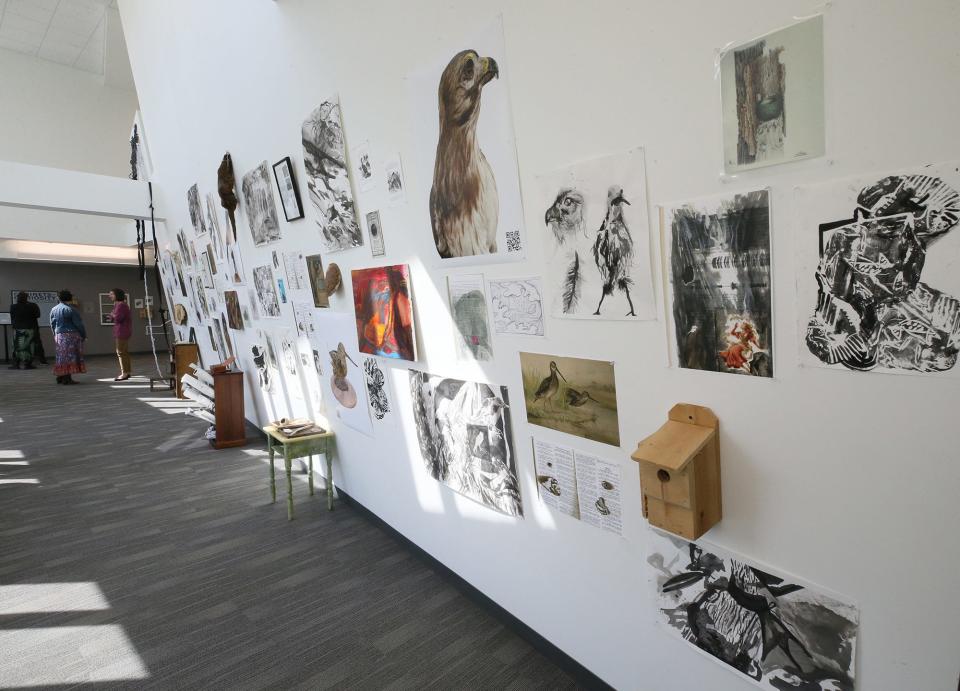UA exhibit is for the birds, including critically endangered ivory-billed woodpecker

Note: This story has been corrected to reflect that the ivory-billed woodpecker officially remains under Endangered Species Act protection.
Polished and primped and patched, the ivory-billed woodpecker and its avian friends hadn’t looked this good in decades.
In fact, they were dashing enough to put on display April 29 in an exhibit conceived and created largely by University of Akron students.
More: Ivory-billed woodpecker gets top billing as birds in UA collection get student makeovers
As part of a university "unclass" — sort of a non-traditional offering that students help develop — the students chose the birds they wanted to revive, studied them and learned taxidermy methods to make their subjects lifelike again. Students from other disciplines added materials and research, like artwork.
The birds are part of a 118-year-old collection, pulled out of storage and into the limelight for the “Cabinets of Curiosity: Natural History Mysteries” class led by professor Lara Roketenetz, director of University of Akron Field Station.

“I told my students last week this class was a dream come true to teach,” she said at the exhibit opening.
Reviving a century-old collection
The specimens comprise part of a collection donated early last century by Thomas and Sarah Rhodes, prominent Akron philanthropists of the era.
After weeks of work, the birds went on display. Each of the specimens has accompanying artwork and literature assembled in displays also created by the students.
Gary Holliday, associate professor of curricular and instructional studies at the university, said the exhibit was an “amazing” group effort.
“I love how all the different components work together,” he said. “It was really a collaborative effort in many ways.”
Putting the color back in
The star of the show was the ivory-billed woodpecker, which received special attention. The last official sighting of the bird was in 1944.
A lingering dispute about the bird's fate continues almost 80 years later, with NPR and National Geographic recently weighing in on the issue, and fans of the so-called "lord god bird" claiming recent sightings. A U.S. Fish and Wildlife Service proposal to declare the bird extinct has been met with fierce opposition, with a 30-day public comment period on the plan concluding in February this year. Information on the service's website says a decision on whether to implement the proposal generally comes one year after the its proposal. The plan was announced Sept. 30.

Maria Burke, a taxidermy expert who is also secretary of the Ohio Taxidermy Association, was tasked with restoring the woodpecker. She said her experience at the Cleveland Natural History Museum and the Carnegie Museum of Natural History exposed her to taxidermy techniques used by some of the nation’s best.
“The idea is not to cause any further damage,” she said.
The ivory-billed woodpecker suffered bleaching from light sources over the years, the tips of feathers were broken and its neck was bent out of place.
Burke said she made a patch on the neck with chicken feathers, realigned the neck and cleaned the bird, which had accumulated soot and dust.
“I put some of the color back in,” she said. “The black had faded to brown.”
An idea takes flight
Works by university art students inspired by the birds were incorporated into the displays throughout the exhibit, highlighting the collaborative nature of the project.
Hannah Jackson, a UA student from Norwalk, said she had initial concerns about working with the birds for health reasons.
Specimens preserved before the 1980s contain arsenic, which can be inhaled. Students were required to wear masks while restoring the birds.
“When I first started, I was a little hesitant about touching them,” she said.
Jackson said students in the class split into two groups to prepare for the exhibits at UA and the library.
Leave a message for Alan Ashworth at 330-996-3859 or email him at aashworth@gannett.com. Follow him on Twitter at @newsalanbeaconj.
If you go
The Cummings Center for the History of Psychology is located at 73 S College Street on the University of Akron campus.
It’s open Tuesday through Saturday from 11 a.m. to 4 p.m. except Wednesday, when the hours are 1 to 8 p.m.
There is a cost to view the “Cabinets of Curiosity” exhibit and others at the center.
For information, call (330) 972-7285.
A separate exhibit is on display at the Akron-Summit County Public library in downtown Akron.
This article originally appeared on Akron Beacon Journal: UA exhibit is for the birds, including seldom seen ones

